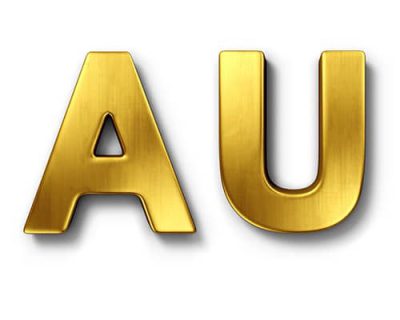
Gold down early Friday on a stronger dollar and higher treasury yields, reacting very little to this morning’s U.S. jobs report.
March’s Nonfarm payrolls grew by 431,000 and the unemployment rate dipped down to 3.6% the Bureau of Labor Statistics reported Friday. Economists had forecast 490,000 on payrolls and 3.7% for the jobless level. Even though the month missed expectations, 2022’s first quarter ended with an addition of nearly 1.7 million jobs. Gold shrugged off the numbers, sticking close to its early trading day dip to $1,935 an ounce.
The strength in the U.S. currency added pressure to the yellow metal that counterweighed haven demand for gold as the conflict between Russia and Ukraine continued.
Russian President Vladimir Putin on Thursday threatened to cut off gas exports to Europe unless customers pay for the fuel in rubles. The move was in response to crippling economic sanctions from Western nations in response to his invasion of Ukraine in February.
Meanwhile, the dollar rebounded from a one-month low, making gold less attractive to holders of other currencies, who will have to pay more to invest in the precious metal.
Front-month gold futures rose 0.8% Thursday to settle at $1,954.00 an ounce on Comex, and the June contract dropped 0.3% in the first four days of the week. Gold advanced 2.8% in March after gaining 5.8% in February. It gained 6.9% in the first quarter and retreated 3.5% in 2021. Currently, the June contract is down $24.10 (-1.23%) an ounce to $1.929.90 and the DG spot price is $1,932.80.
Reuters reported that holdings in Russia’s gold and foreign currency reserves fell to $604.4 billion as of March 25, the lowest level since August 2021.
Ongoing uncertainty over the course of the pandemic and the new secondary omicron variant of the coronavirus also continued to support gold.
Front-month silver futures increased less than 0.1% Thursday to settle at $25.13 an ounce on Comex, and the May futures contract dropped 1.9% in the first four days of the week. Silver gained 3.1% in March after surging 8.8% in February. It rose 7.6% in the first quarter after falling 12% in 2021. Silver prices are tied to industrial demand. The May contract is currently down $0.508 (-2.02%) an ounce to $24.625 and the DG spot price is $24.72.
Spot palladium rose 0.7% Thursday to $2,292.50 an ounce and fell 4.7% in the first four days of the week. It touched a record $3,440.76 earlier this month. Russia produces about 40% of the world’s palladium, and Russia’s Nornickel is the world’s largest supplier of palladium. The metal dropped 8.5% in March after gaining 5.3% in February. It gained 20% in the first quarter and retreated 22% in 2021. Currently the DG spot price is up $65.40 an ounce to $2,351.00.
Spot platinum decreased 0.3% Thursday to $1,001.60 an ounce and lost 0.7% so far this week. The metal dropped 4.2% in March after advancing 1.7% in February. It advanced 2.9% in the first quarter after losing 9.4% last year. The DG spot price ticked up currently $3,80 an ounce to $1,006.00.
Disclaimer: This editorial has been prepared by Dillon Gage Metals for information and thought-provoking purposes only and does not purport to predict or forecast actual results. This editorial opinion is not to be construed as investment advice or as a recommendation regarding any particular security, commodity or course of action. Opinions expressed herein cannot be attributable to Dillon Gage. Reasonable people may disagree about the events discussed or opinions expressed herein. In the event any of the assumptions used herein do not come to fruition, results are likely to vary substantially. It is not a solicitation or advice to make any exchange in commodities, securities or other financial instruments. No part of this editorial may be reproduced in any manner, in whole or in part, without the prior written permission of Dillon Gage Metals. Dillon Gage Metals shall not have any liability for any damages of any kind whatsoever relating to this editorial. You should consult your advisers with respect to these areas. By posting this editorial, you acknowledge, understand and accept this disclaimer.
